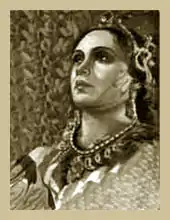| Sachin State સચીન રિયાસત سچن ریاست | |||||||
|---|---|---|---|---|---|---|---|
| Princely State of British India | |||||||
| 1791–1948 | |||||||
 Flag | |||||||
 Sachin State (pink) within Surat Agency | |||||||
| Capital | Sachin | ||||||
| Area | |||||||
• 1931 | 127 km2 (49 sq mi) | ||||||
| Population | |||||||
• 1931 | 22,107 | ||||||
| History | |||||||
• Established | 1791 | ||||||
| 1948 | |||||||
| |||||||
| Today part of | Surat district, Gujarat State | ||||||



The Sachin State (Gujarati: સચીન રિયાસત; Urdu: سچن ریاست) was a princely state belonging to the Surat Agency, former Khandesh Agency, of the Bombay Presidency during the era of the British Raj. Its capital was in Sachin, the southernmost town of present-day Surat district of Gujarat State.
History
Sachin state was founded on 6 June 1791. Though over 85% of the subjects were Hindu, the state was ruled by Sunni Muslims of the Siddi dynasty of Danda-Rajpuri and Janjira State. The Siddi dynasty is of Abyssinian (Habesha) origin.[1]
Sachin State was under the protection of the Maratha Peshwa until it became a British protectorate. It had its own cavalry, currency, and stamped paper, as well as a state band that included Africans.
Fatma Begum (1892–1983), one of the early superstars of Hindi cinema and India's first female film director, was allegedly married to Nawab Sidi Ibrahim Muhammad Yakut Khan III of Sachin State. But Sachin royal family sources cast a veil over this[2] claiming no record of a marriage or contract having taken place between the Nawab and Fatima Bai or of the Nawab having officially recognised their children, Sultana, Zubeida and Shehzadi, as his own.[3] Sultana, the daughter of Fatima Begum,[4] became a leading figure in early Indian movies.[5] Zubeida, leading actress of India's first talkie film Alam Ara (1931), was her younger sister.[6]
Nawab Sidi Ibrahim Muhammad Yakut Khan III, Sachin State's last ruler, signed the accession to join the Indian Union on 8 March 1948. The state then became part of Surat district in Bombay Province.[7][8][9]
After the Partition of India, Zubaida stayed in India, while her sister Sultana moved to Pakistan where she married and had a daughter, Jamila Razzaq, who became a prominent Pakistani actress in the decade between the mid-1950s and the mid-1960s.[10]
Rulers
The rulers of Sachin State bore the title 'Nawab' and were granted the right of a 9 gun salute by the British authorities.[11]
Nawabs
- 6 Jun 1791 – 9 July 1802 Abdul Karim Mohammad Yakut Khan I (b. 17.. – d. 1802)
- 9 July 1802 – 25 March 1853 Ibrahim Mohammad Yakut Khan I (d. 1853)
- 25 Mar 1853 – 1 December 1868 Abdul Karim Mohammad Yakut Khan II (b. 1802 – d. 1868)
- 1 December 1868 – 4 March 1873 Ibrahim Mohammad Yakut Khan II (b. 1833 – d. 1873)
- 4 March 1873 – 7 January 1887 Abdul Kadir Khan (b. 1865 – d. 1896)
- 4 March 1873 – Jul 1886 .... -Regent
- 7 February 1887 – 19 November 1930 Ibrahim Mohammad Yakut Khan III (b. 1886 – d. 1930)
- 7 February 1887 – 4 May 1907 .... -Regent
- 19 Nov 1930 – 15 August 1947 Haydar Mohammad Yakut Khan (b. 1909 – d. 1970)
See also
References
- ↑ Pandey, Vikash (19 December 2014). "Africans in India: From slaves to reformers and rulers". Newspaper. Retrieved 19 December 2014.
- ↑ Dokras, Uday (1 January 2021). "CHRONICLES of the African Diaspora in INDIA". Indo Nordic Aithor;s Collective.
- ↑ Sachin Princely State (9 gun salute)
- ↑ "Sultana-actress". IMDb.com. amazon.com/IMDb.com. Retrieved 13 September 2012.
- ↑ Indian films and posters from 1930
- ↑ "sultana". Cineplot.com. Retrieved 13 September 2012.
- ↑ Hunter, Sir William Wilson. The Imperial Gazetteer of India. London, Trübner & Co., 1885
- ↑ Malleson, G. B. An historical sketch of the native states of India, London 1875, Reprint Delhi 1984
- ↑ Chisholm, Hugh, ed. (1911). . Encyclopædia Britannica. Vol. 26 (11th ed.). Cambridge University Press. p. 117.
- ↑ Jamila Razzaq and Zubaida Archived 11 October 2015 at Wikiwix
- ↑ "African Rulers in Indian History: Sachin, Gurjarat". Think Africa. Retrieved 22 May 2022.
External links
 Media related to Sachin State at Wikimedia Commons
Media related to Sachin State at Wikimedia Commons- Early Indian Movies